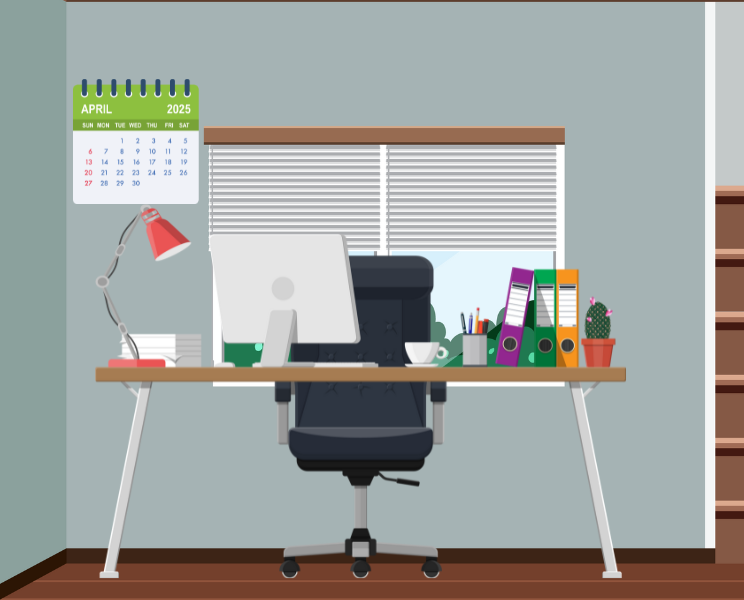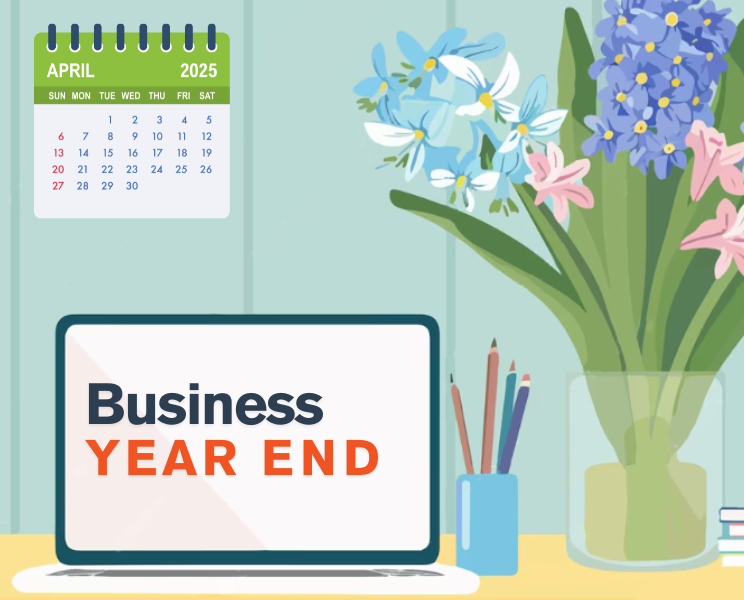Domestic Reverse Charge
The Builders’ Bogeyman: Domestic Reverse Charge VAT on Construction Services, coming to a site near you, 1 March 2021.
(Cue creepy intro music…)
If you have had any involvement in the construction industry over the past 12 months you may have heard the rumours about the new domestic reverse charge on VAT for construction services. The original deadline of 1 October 2019 has been successfully pushed back due to a consensus that most businesses affected by it are not yet aware of the new rules. The new rules will now apply from 1 March 2021.
Therefore, if it involves you: be prepared for the changes. Even if you are only dabbling in the odd bit of property development, or considering branching out into supplying installation and materials, you should probably read this too.
This brief is designed to lay out the main issues in plain language, give some practical guidance, and allay your fears. It’s really not as bad as it seems. Mostly.
Why the new rules?
The main reason for the change is HMRC is trying to clamp down on ‘missing’ trader fraud in the construction industry, aimed at unscrupulous companies and individuals failing to report or misreport the VAT due on their sales.
Basically, everyone else is now suffering for a few bad apples. Whilst the new scheme also potentially simplifies VAT administration for smaller subcontractors, which is a (small but welcome) bonus, the potential negative cashflow implications may have a massive impact on the way the whole sector manages its payments and invoicing.
Who is affected by the new rules?
These new rules are aimed at YOU:
- Are you the main contractor? Someone who buys in construction services, perhaps from individual contractors, and sells them on to the final developer or homeowner?
- Are you the subcontractor? Supplying services to the main contractor on-site or to someone else who is then supplying the main contractor?
If you are involved in a design and build scheme, you are likely to be caught in these rules unless you are the “end user” or final owner.
Who is not affected?
- Are you a property developer? If you buy in construction services for a property you are planning to sell or rent the completed building directly onwards yourself, then the new rules are not going to affect you. You are an “End User”. You can stop reading now. But, if you are planning on a partial build, say, and supply construction services on to the new owner afterwards, I’m afraid you need to keep going.
- Your own home? If you’re involved in DIY housebuilding, this isn’t for you.
- Tenant or landlord? If you are a tenant undertaking works for your landlord, or vice versa, you’re in luck – these rules shouldn’t apply to you.
- Grouped company? Is your company recharging construction supplies to someone else in your group of companies? Rest easy – connected company supplies are generally exempt from the new rules.
- “End User”? If you are the one selling or using (“own”) the property at the end of the process, you are considered an “End User” so you shouldn’t need to apply the Reverse Charge rules.
For contractors
Your customer is not VAT registered, and doesn’t need to be (so far)? A non-VAT registered client will not be able to report the VAT as per the DRC outline. Normal VAT rules will then apply to this customer – they are effectively treated as an End User.
Your customer is not CIS registered, and doesn’t need to be? Most probably, as CIS does not apply, then neither will DRC as it essentially covers the same services, but you will need to double check and possibly get advice to make sure.
What services does it affect?
These are broadly the same as the services which fall under CIS – the Construction Industry Scheme – which catches most small contractors (and pays over income tax on their behalf). The most common “specified services” the new rules affect, amongst others:
- Construction, demolition, and repair of buildings and structures.
- Installation of light, ventilation, heating.
- Construction of roadways, water works, and similar civil engineering.
- Supply and fix services
It excludes
- Installation of blinds, shutters, and seating
- Installation, repair, and decoration of signs and signboards.
- Installation or repair of security systems and burglar alarms
- Professional services – architects, designers, etc.
- Employment business supplying construction staff
It also does not affect supplies which are zero-rated anyway – services or services supplied with relevant materials for new residential builds, for example.
If you’re not sure, you should seek advice.
How does it work?
Any specified services you supply to a contractor, or specified supplies you receive from a subcontractor, are accounted for under the reverse charge whereby you charge yourself VAT, and, as will likely be the case, you will reclaim that same amount of VAT all on the same VAT return. But you don’t physically receive (or pay) that VAT amount.
How does it affect me? In your pocket …
The biggest problem will be the impact on working capital and cashflow.
Impact: Negative cashflow
Normally, a subcontractor or contractor can keep and use the VAT received on sales until it needs to pay HMRC via its quarterly VAT return – up to 4 months and 7 days after being paid. For those working between mainly non-VAT registered subcontractors and VAT registered main contractors, this was a useful working capital bonus for you. Now, that VAT amount will not exist – and neither will the cashflow advantage.
Mitigation: Positive cashflow
However, if you are a subcontractor mainly supplying reverse charge services (effectively charging no VAT), and you have reasonable amounts of VAT to reclaim on various materials etc, you may well end up as a “repayment trader” instead. This means you only reclaim VAT on you VAT returns. If you do, you can apply for monthly VAT returns to help boost cashflows and receive VAT refunds earlier. A bit more admin, with a related cost, but it may help a little bit with the cash flow problem created by the reverse charge.
If you are the contractor – supplying to an end user – you will no longer benefit from reclaiming the VAT from subcontractors in your VAT returns which may result in a much higher one off impact of the VAT return. On the other hand, you won’t need to pay the VAT to the contractor to start with. Overall: you may need to reconsider how you stage your sales invoicing and manage your cash flow to ensure that you have the funds to meet your new higher quarterly liabilities.
VAT cash accounting reporting
If your company is VAT registered and uses the Cash Accounting scheme – ie: you account for VAT based on the dates when you pay or are paid, then the new rules will change how you administer your VAT return.
The reverse charge supplies need to be accounted for the earlier of the date payment is made or the invoice date. If you usually account for your supplies based on when you pay them, later than the original invoice date, then you will need to change: the DRC supplies are now based on invoice date instead.
Effectively, you will report your reverse charged expenses on the ‘Accruals’ basis – per the invoice date – rather than per the payment date (“Cash”), but all your other supplies will still be reported on the cash basis. This might cause a bit of a headache for whoever deals with your VAT return, depending on what systems you use.
You can consider switching to the accruals basis for everything, but make sure to get advice first, as this could cause you further cashflow problems. However, if you’re battling with your current processes to do this, this might also be an opportunity to move away from spreadsheets and into the world of cloud accounting, where your new software should automatically account for reverse charge invoices on the accruals basis, regardless of the rest of your cash supplies. You may still need help to move from Cash to Accruals accounting though.
Example:
I am the main contractor, supplying services onwards to an End User. My VAT return is to Quarter end December 2020.
Old rules:
I have £100,000 + VAT in bills on relevant construction services from various subcontractors dated between 1st October and 31st December. I only get around to paying 50% before 31st December. On my old style VAT return, before the Reverse Charge, I would have only included the 50%, and I would have reclaimed the relevant amount of VAT.
VAT to reclaim: – £10,000
Net purchase figure: -£50,000
New Rules:
I have £100,000 in bills on relevant reverse charge construction services from subcontractors dated between 1st October and 31st December. I only get around to paying 50% before 31st December. I account for VAT at the relevant rate on 100% of the bills, but although I can reclaim the VAT, I’m also repaying it at the same time – net VAT affect is £nil.
VAT to reclaim ‘from HMRC’: – £20,000
VAT to charge ‘to myself:’ £20,000
Net purchase figure: – £100,000
The above treatment also only applies if I have the right to reclaim the VAT in full. If I’m partially exempt – say, I have rental income from some houses – then I will not be able to “reclaim” the VAT in full.
What do I do?
You must check that the customer (recipient of your services) is VAT and CIS registered – you’ll need proof of their VAT and CIS number – or if they are an End User.
Why is this important?
Either as a contractor or subcontractor, you are both responsible for the correct VAT treatment of any invoices received or sent out. If you don’t report items correctly:
If the contractor erroneously accounts for VAT on a subcontractor invoice, then HMRC has every right to deny the VAT reclaim on that invoice to the contractor – even if the contractor has paid it in full.
Similarly, if a subcontractor charges VAT when the work should have been treated under the reverse charge, it is also possible that HMRC will deem the VAT element as payable, even if it was incorrectly charged in the first place.
Either way, HMRC benefits from the outcome – so be careful.
Subcontractor?
If DRC applies: a note on the invoice must be stated: eg: “Reverse charge VAT Act 1994 s.55A applies”. Various wordings exist – HMRC has a list.
You must either state clearly the amount of VAT which would be due or the VAT rate – but you can’t a) include that in the amount due from the customer, or b) charge the customer VAT.
Main Subcontractor?
You should request written confirmation from the customer that they are an End User for each job.
Despite HMRC guidance implying that any follow-on contract with the same entity could be treated the same, you should probably check each time to ensure that there are no mistakes as developers can switch between being End Users to being main contractors, and vice versa. Otherwise you may end up with VAT due which you didn’t need to pay.
If you’re not sure if your services are covered by the exemption or you’d like to talk about how to put processes in place to smooth the transition to the new system, please do get in contact and we’ll be happy help.



